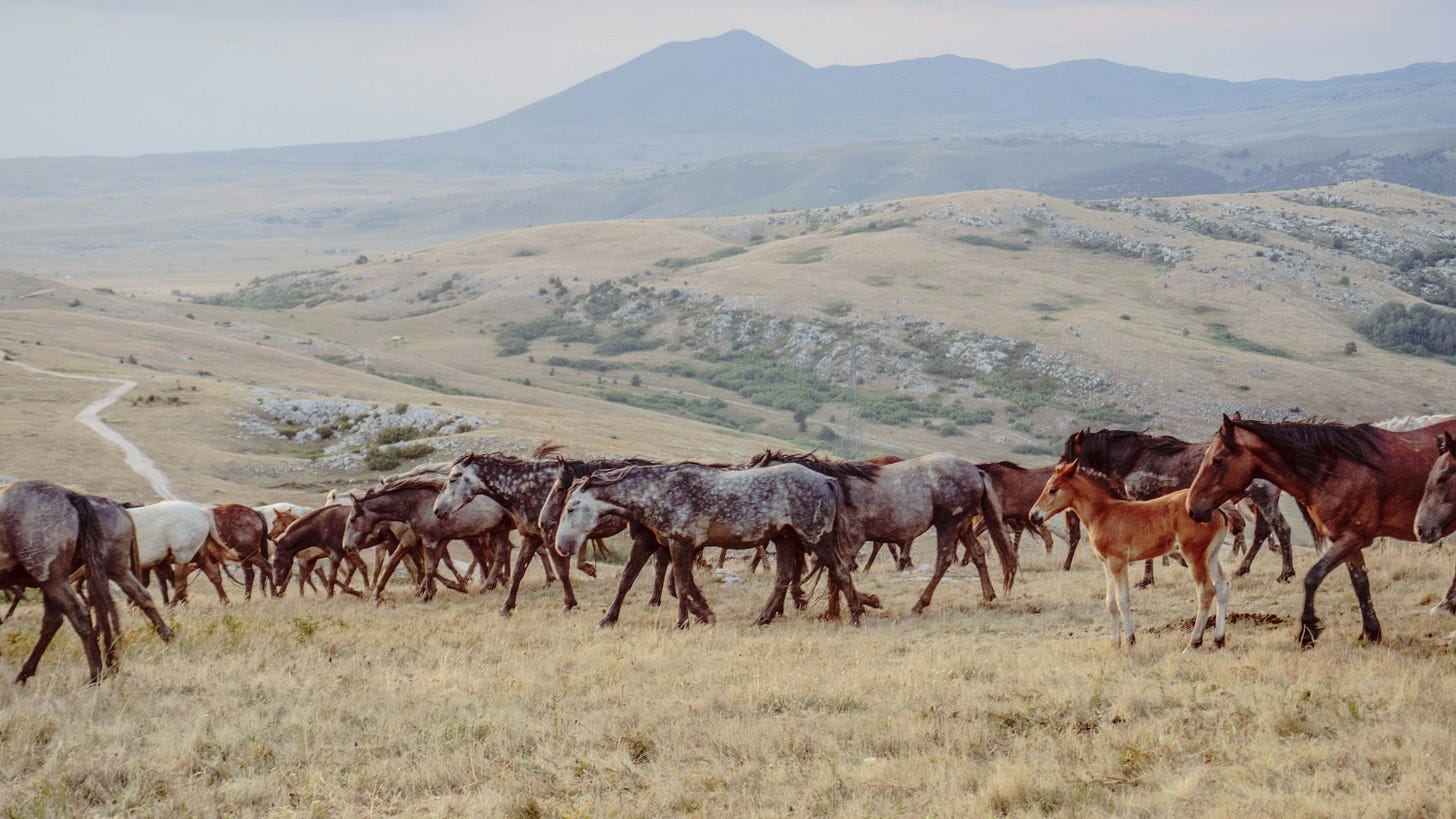Change Everything No 40: Rethinking disability with ancient Mesopotamia
“On the 18th day of the month of Tebitum, they brought Shinunutum the blind girl here before me to learn the art of music"
Book news
I will be signing copies of Change Everything in the wonderful Cleo Books in Newquay on Friday, April 4. And was this week reminded of the review of the book by the Green European Journal: yes, I did enjoy being matched with Bernie Sanders!
Learning about the present from the past
Photo by Egor Myznik on Unsplash
An essay about “The Blind and Their Work in Mesopotamia in the Third and Second Millennium BC” (by Eric J Harvey), in a collection of essays titled Disability and the History of Science, is the sort of thing that the anti-intellectual right likes to get steamed right up about: on their account “wasteful, woke” research. But taking the time to read it - in fact the whole volume - is hugely enlightening about issues of disability in today’s society.
The source material is practical, day-to-day records. That is very different from what survives in texts of the classical world that have come down to us, as a result of technological and historical factors. Greek and Latin texts were written primarily on parchment and had to be copied and recopied over the centuries to have a chance of survival. So those that remain were those judged to be of literary value.
“These literary texts present us with stirring and evocative portrayals of blindness, but they should not be mistaken for transparent historical witnesses. They occupy a land I refer to as the sighted imaginary, where the identities and characteristics of blind figures are created from the blurred and distorted expectations of the sighted majority. They sprang overwhelmingly from sighted minds and passed overwhelmingly from sighted mouth to sighted ear and from sighted hand to sighted eye… we read about a cloud of cultural beliefs, associations, and expectations that circulated within the general population in these times and places, in which real blind people plated little role and over which they had little contol.” (p. 59)
By contrast, the clay cuneiform tablets of Mesopotamia, extracted more or less at random from the soils of past destruction and decay, do include literary texts, but by volume vastly more ephemeral records never intended for posterity, or to paint a coherent picture of a group of people, rather they are accounts - sometimes purely in the mathematical sense - of people’s lives, “letters, memoranda, recepts, ration lists, personnel rosters, records of agricultural yields and legal proceedings, and all the other genres and types of texts involved in the day-to-day administration of empires”. (p. 59)
Of course there is still bias in what was recorded: blind menial workers and slaves were recorded as such in the records of palaces and temples, while the majority of free people were less likely to be documented, and less likely to have their disability recorded.
In the prominent city of Mari, the archives suggest that blindness was closely associated with musicianship, a profession that clearly made a prominent contribution to palace life, with of the 350 women recorded in the palace at the beginning of Zimri-Lim’s reign nearly half of them being musicians. Another 130 men also had musical occupations. Blind musicians were recorded as a special category, for reasons unstated, although there is a known ancient tradition from Egypt and Greece that they were thought to have a more focused talent as a result of their impairment. (p. 68)
There is a precious if frustratingly brief account of an actual life in the Old Babylonian empire: “On the 18th day of the month of Tebitum, they brought Shinunutum the blind girl here before me to learn the art of music.” (p. 69) [The “me” being an identified music teacher.]
But many other roles are recorded in the text, not specifically stereotyped, but rather adapted to capabilities, particularly activities requiring less movement, such as water drawing, flour milling and laundry, but there are also a wide range of “artisans, weavers, ox drivers, plowers, grooms, fishers, shepherds and dock workers”.
“That is not to say they were treated equally, however, or even humanely in all cases. Blind people were kidnapped for garden work in Iri-Kagina’s Lagash, prisoners of war were sometimes blinded and set to captive labor, and enslaved blind people at Nuzi carried diminished calue as collateral.” (p. 73)
The account provides one big piece of support for modern thinking about disability as being a product of society and its construction, rather than something defined by the person: the social model of disability in the jargon. For it may well have been possible for the blind to drive in ancient Mesopotamia, as in most societies up to the present day. For just like a person being supported by a guide dog today, they might well have been able to rely on the eyes of a horse or ox, which would - particularly on a regular route - know the way and be able to identify and avoid new hazards.
Picks of the week
Reading
Wang Zhaojun was a minor Han Chinese princess, married off, in a very familiar around the world, for political reasons to be a consort of Huhanye Chanye, the Master of All Those Who Draw The Bow, the chanyu of the nomad Xiongnu, the first of the great steppe empires. In later Chinese historiography, she came to be known as “The Yanhzhi-Wife Who Pacified the Northerners”, feeding into a narrative of barbaric outsiders being pacified by settled culture through the vehicle of the female body. Careful research and archaeology have helped to show that to be the myth that it was, as Bryan K Miller sets out in the brilliant and fascinating Xiongnu: The World’s First Nomadic Empire.
As he says: “The Xiongnu were not pacified by Han brides, Han culture, or Han attacks… [which] highlights the necessity of questioning inherited historical narratives, especially when they are recycled with fictionalising mutations. … the resulting story is not one of brittle barbaric power or an easily pacified polity, but one of sophisticated developments and flourishing doninance by northern steppe people on the continental stage of Eurasia.” (p. 240)
The book is a further blow to the “pervasive Nomadology concept of Deleuze and Guattari”, where “nomas and polis are opposites”… “From these and other models of nomadic societies comes the too often repeated assumption that any apparatus based on mobilities lies in contract to rational institutions of governance. … When delving into early East Asian history, one cannot help but hear this dichotomous precept echoing the binary of wen-literati and wu-military that pervades Chinese political discourse. But whereas the wen-wu incongrous dichotomy has been shown to be a false one, the nomas-polis dichotomy persists.” (p. 10)
Miller starts with a simple objects from a child’s grave, a sheep knucklebone worn smooth from long use, possibly in a game, that is marked with a sign very likely a mark of ownership, quite likely used as brands for ownership of livestock, and also on clay pots and ceremonial regalia. Han records may have said the Xiongnu had no writing, but it may have been that they were simply unable to recognise systems different from their own. As a Han chronicle records: “In autumn [when] the horses are fat [they] hold a great gathering at Dai Forest and examine and check the calculations of people and livestock.” (p. 3)
Photo by Vladimir Vujeva on Unsplash
Miller is no fan of the idea - which seems to have now been generally discarded, that the Huns that ravaged the Western Roman Empire were successors to the Xiongnu: “It was not until the Turkic trives of the sixth century overthrew the Rouran hordes that a reproduction of the Xiongnu template for empire - one of a sipple political order and salient political culture - was sucessfully implemented. By the time of the Turks, no entities, ethnic or political, bore the name Xiongnu or even Hun. But the Xiongnu were far from fortotten. They endured as both prototype and archetype.” (p. 238)
Listening
The wonderfully entertaining, humane and human, History of England podcast has just finished three quite rare “cultural” episodes, a short exploration of the rich life of the Commonwealth period, which was far from the humourless, straightlaced, uninventive stereotype that the Restoration period tried to paint it. As David Crowther outlines, many of what are seen as the achievements of those period date back to the kingless time. David’s up to episode 428, so if you’ve yet to experience the joys of his work, there is plenty to look forward to.
Thinking
Chronic Wasting Disease (CWD) is spreading fast in the United States of America in deer, elk and moose, since first being detected in 1981, and is now in 36 US states, Canada, Scandinavia and South Korea, both in the wild and domestic herds. A prion disease (like so-called “mad cow disease”) - something of which we have only very limited understanding, in the same category of not-life but behaving sort of like life as viruses - there is growing concern about its potentially zoonotic character, since humans are no doubt consuming infected animals in large quantities. To add to the concerns, the prions can be taken up by plants - a concern that led Norway to ban straw and hay from the US. Definitely one to watch…
Photo by Madhu Shesharam on Unsplash
Researching
The kangaroo that doesn’t hop: there’s only one still surviving, “muskies” - musky rat kangaroos. Researchers have just found they predominantly use a "bound" or "half-bound" gait. Fascinating to know: “Hopping animals are quite rare. Hopping evolved once in macropodoids, four times in rodents, and probably once in an extinct group of South American marsupials known as argyrolagids…. we are no clearer on how the remarkable energy economy of kangaroo movement evolved, or why hopping kangaroos got so much bigger than hopping rodents.”
Almost the end
Have you ever written in an academic journal? If so, there’s a good chance your work has been stolen and used to train Meta’s AI. I found three of my articles, going back to 1995 (!), in the database.
What did you think?
You can also find me on Instagram, Facebook, LinkedIn, TikTok and X.







Fascinating as ever, also quite concerning about chronic wasting disease in animals. Surely that must be coming from us humans. Or perhaps this is one of the effects of ecosystem collapse.
Thanks Natalie. Slight tangent but here's one of my favourite blind thinkers ~1000 CE: https://sentientism.info/sentientist-pledge/al-maarri